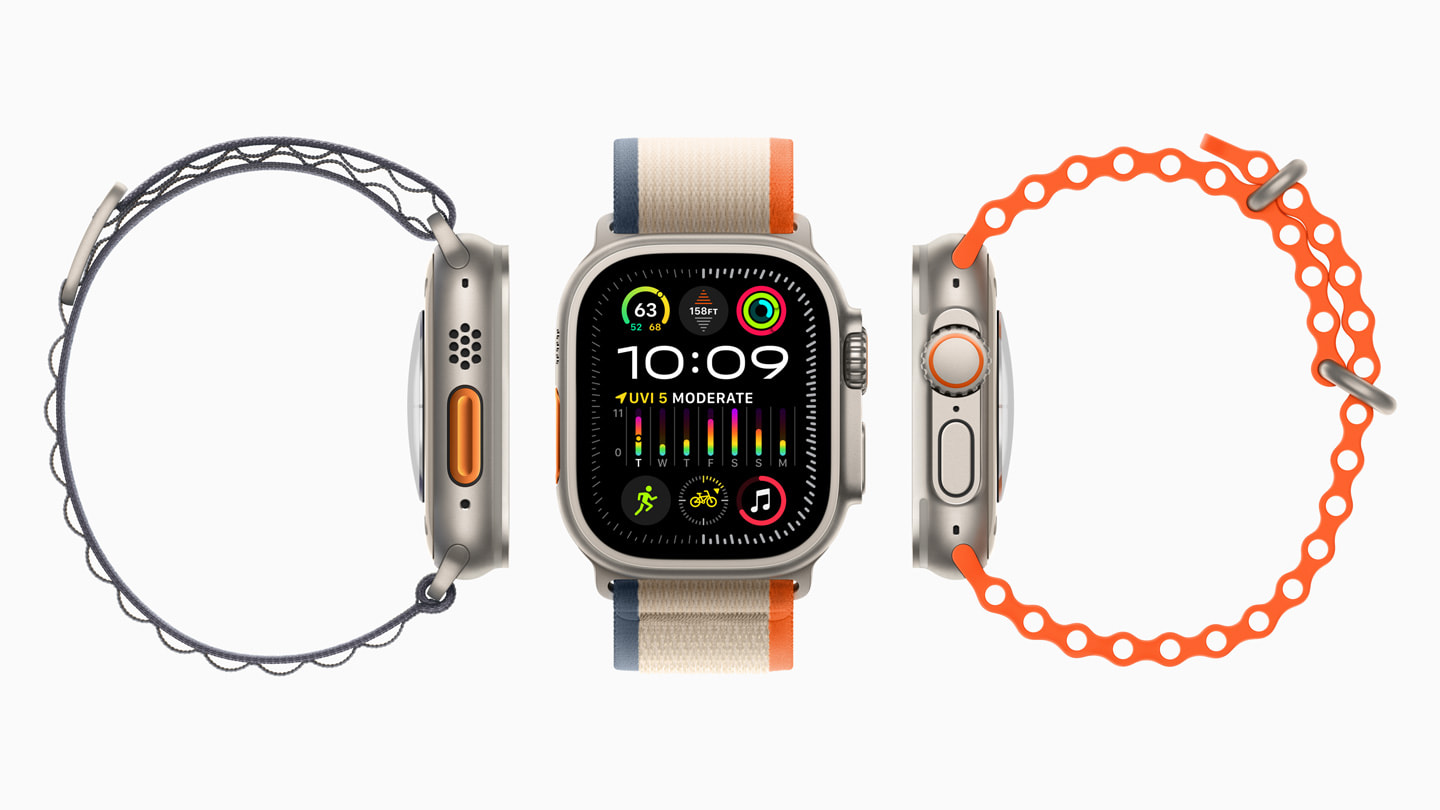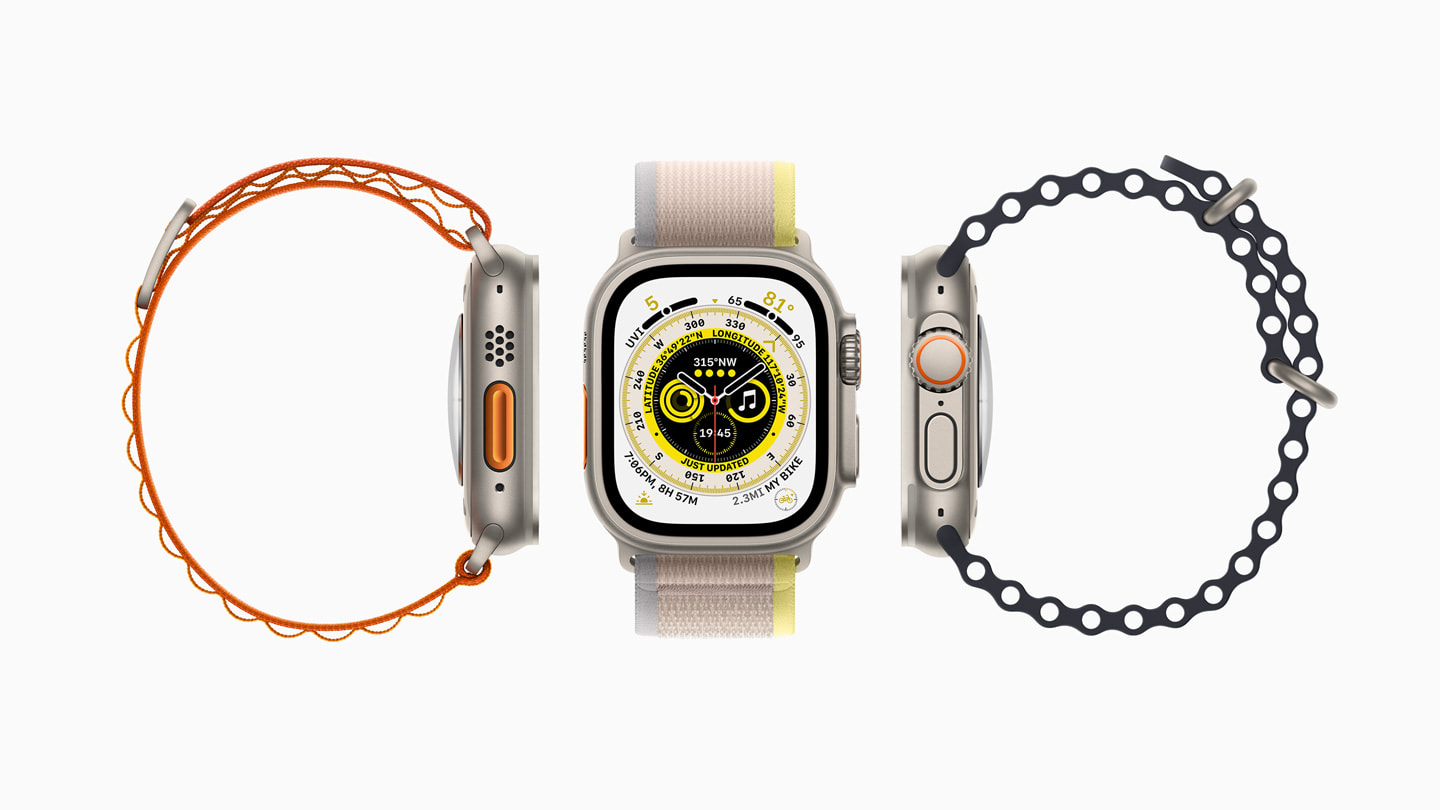For two years, round the clock, through workouts, travels and the regular tumbles every wearable product endures, I’ve had an Apple Watch Ultra on my wrist. Here’s the straight read on the hardware today — what’s still minty, what’s actually been lived with, and a few things that surprised me long the way.
Two Years on the Wrist
This watch has recorded hundreds of outdoor workouts from dirty trail runs to hourslong bike rides; it has been in the ocean, pools and downpours. I use it to make payments during checkouts, track time, navigate my way around and measure my health. Or to put it another way, it hasn’t been babied. The end result is a clear picture of how Apple’s toughest watch fares after a lot of normal — and some rough — use.

Case, crystal and crown: the wear you see
The titanium case whispers it first. And the flat edges framing the display hold a constellation of tiny scuffs and a few light nicks from when it encountered rock or gym equipment. That’s typical of titanium: it stands up well to dents but it shows cosmetic marks sooner than stainless steel. A quick once-over with a microfiber cloth hides most of it, but it’s there, the patina.
The sole sapphire crystal display, however, is another matter. Still scratch free to the eye two years later. That jibes with what Consumer Reports and other testing houses will tell you about sapphire’s high hardness, and is one of the reasons why the Ultra’s display still looks mint. No micro-swirls, No coating damage, No rainbowing under bright lighting.
Buttons and the Digital Crown remain as clicky as ever, with no wobble. The orange Action button hasn’t significantly faded yet, although the edge of the guard has a little bit of polish from friction with packs and sleeves. Microphones and speaker grilles stay clean; audio cues and calls are loud and clear, just like when you first got the device.
Battery health and actual runtime
Battery health has stabilized in the low 90s per the watch’s own readout, which is what a lot of Ultra owners report after a couple of years. In real life, it still translates to an easy day and a half between charges for me with notifications, GPS workouts a couple times a week and the always-on display turned on. On the lighter two, I’ll stretch to two. Apple’s own guidance (the company has declined to provide me precise battery capacity estimates) says that watch batteries are built to last up to 80% of their original capacity after several hundred charging cycles, and my experience lines up with that.
Charging habits matter. I usually don’t let it get deep-cycled to zero, and I continue to use Optimized Battery Charging. Those two practices appear to help maintain capacity over the long run — something that Apple’s battery care documentation shows for.
Water, heat, hard wear
The Ultra’s claimed water resistance (WR100 and EN13319 for recreational diving) isn’t marketing nonsense. Saltwater swims and long soaks in a pool didn’t make it flinch. I rinse the watch with fresh water afterwards, just the way Apple recommends, and never expose it to excessive heat. Years into this routine, there’s no corrosion, no fogging and no muffled speaker, which tells us the seals are still earning their keep.

The chassis has brushed off the ravages of dust, vibration, and temperature swings that would leave lesser wearables sluggish. Apple calls out testing to MIL-STD-810H conditions, and while that’s not a guarantee for everyone, the durability lines up with what I’ve seen in the field.
Bands: the First Failing Point
If anything has looked exhausted, it’s the bands. One fabric-style strap frayed at the stitchings, a relatively common update thanks to sweat, sunscreen and numerous washings. I’ve since alternated between a fluoroelastomer sport band for workouts and a titanium mesh band for all-day wear. The lug system is just as tight as in the case, and I can even bet that replacing bands will be just as solid (but I haven’t yet received the tool to do so).
Support, service, and the reality of resale
On the software front, the Ultra still gets major watchOS updates like the new watches. It’s that continuing support that’s so essential; that’s what keeps health features, safety tools and performance tuning current, long after the sticker shock of a new purchase. Hardware service is still simple as well: Apple includes battery service on the Ultra for a mid-double-digit to low-triple-digit fee, and supplies are abundant based on iFixit’s teardowns and repair community reports.
Resale values have outperformed standard models, reflecting the demand for the bigger screen, the dual-frequency GPS and the tougher construction. Market trackers place Apple at the top of global wearables shipments on a regular basis, and this ecosystem gravity prevents older models from becoming obsolete faster.
So, what’s it like now — and should you upgrade?
Two years in and my Apple Watch Ultra looks like a tool that’s been used to do a job—light scuffs on the titanium casing, a flawless sapphire screen, buttons with a satisfying click and a battery that still comfortably gets me through a day’s use. It is not a safe queen; it is a trusty tool that saunters through life with marks here and there — a passport full of stamps.
If you already own a similar-condition Ultra or Ultra 2 there’s no need to upgrade. The most recent models may offer new sensors or performance headroom, but some of the core experience — toughness, battery life, navigation, health tracking— is really strong. And for anyone thinking about getting in on the Ultra line who’s worried about how it holds up, this is the bottom line, after long-term use: it’s built for the long haul, and it doesn’t just look the part, it works the part.

